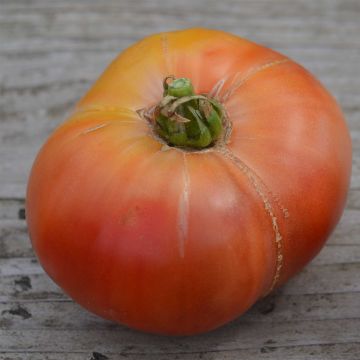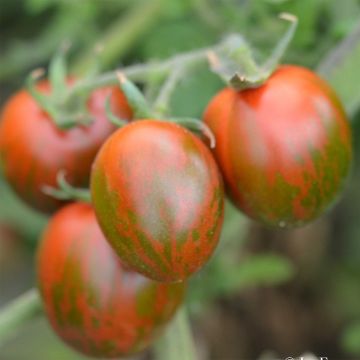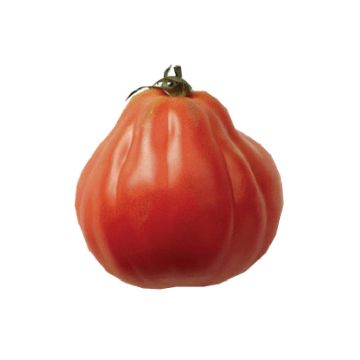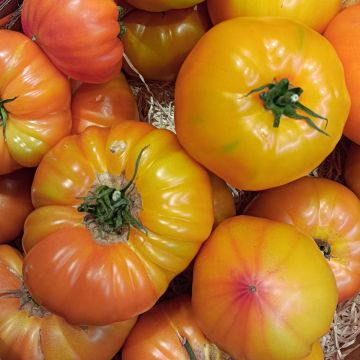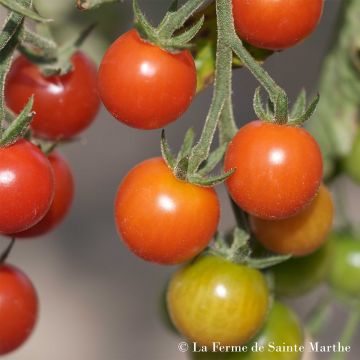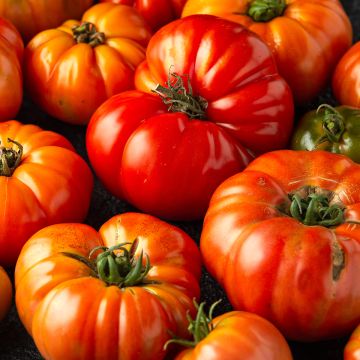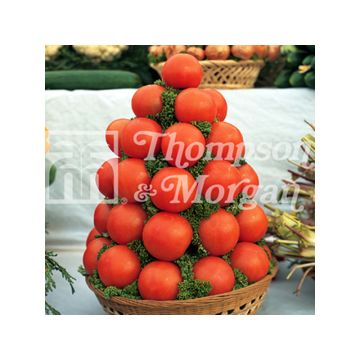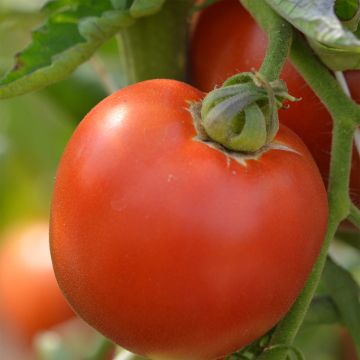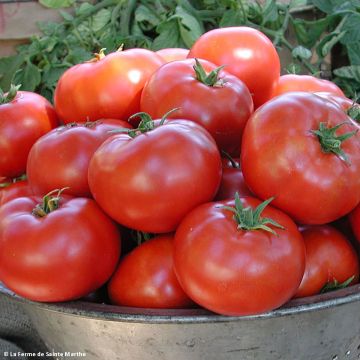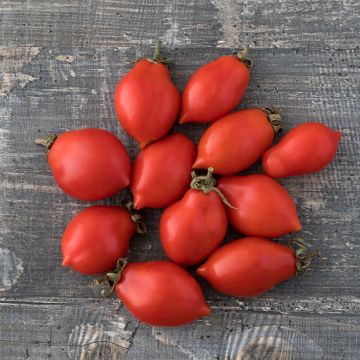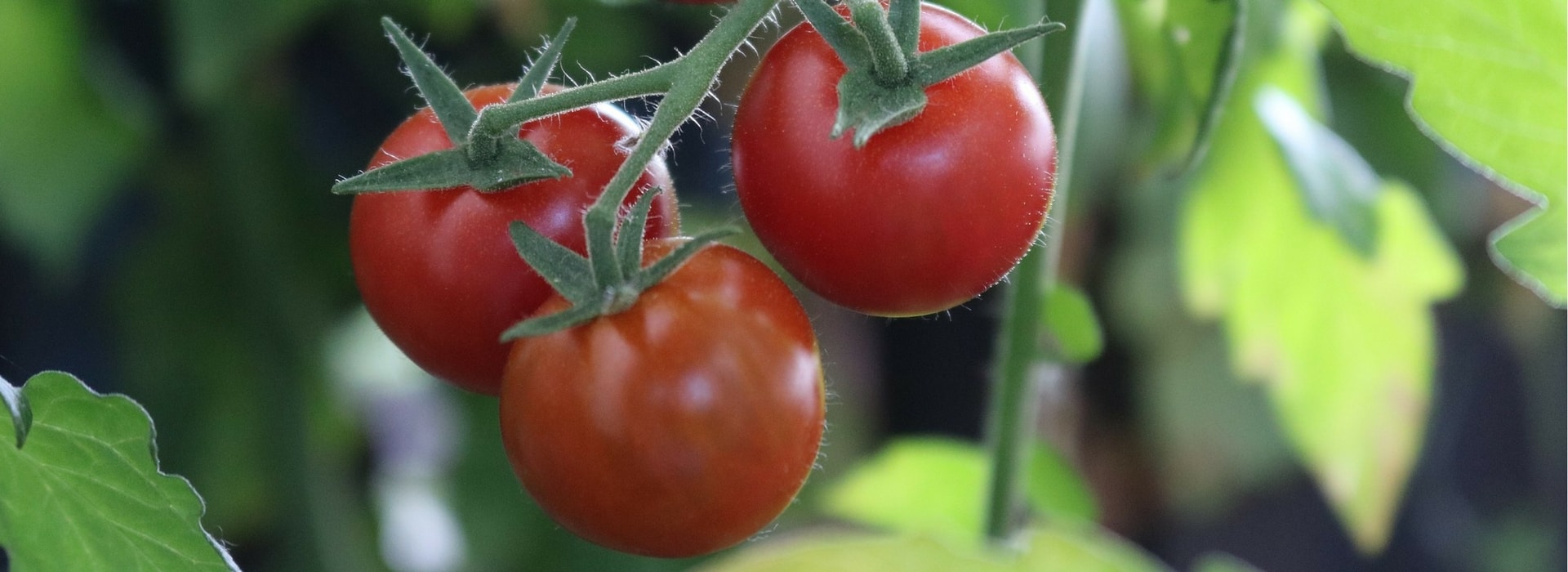
Succeeding in growing tomatoes
Sowing, planting, pruning, watering, and potential diseases
Contents
The tomato is one of the iconic vegetables of the vegetable garden. It has the advantage of providing very good yields in a small area and is easy to grow as long as a few simple rules are followed. There are many varieties, distinguished by their size, colour, and flavour… Tomatoes can be used in countless recipes and can be enjoyed both raw in salads or as a snack, and cooked, stuffed, in quiches, or in ratatouille, for example. Discover all our tips for sowing tomatoes, planting them, pruning them, and protecting them from diseases, to achieve abundant harvests!
When and how to sow tomatoes?
Tomato seeds are preferably sown in March, but plants intended for greenhouse cultivation can be prepared as early as February. Sowing takes place in a warm environment at home or in a heated greenhouse, ideally at 20 °C (16 °C minimum) in a seed tray or buckets.
- Prepare pots, trays or seed trays by filling them with seed compost.
- Sow the seeds by scattering them on the surface.
- Cover them with a thin layer of compost.
- Water gently, using a watering can with a rose or a spray bottle.
- Be sure to label your sowings, especially if you have sown different varieties.
- Place the pots in a bright location to prevent the young plants from becoming leggy (producing very thin and tall, etiolated stems). Ideally, place them near a window or in a conservatory.
- Keep the compost moist (but not soggy) until germination, which usually occurs after about a week.
- As soon as the seedlings have four leaves, transplant the strongest ones into individual pots.
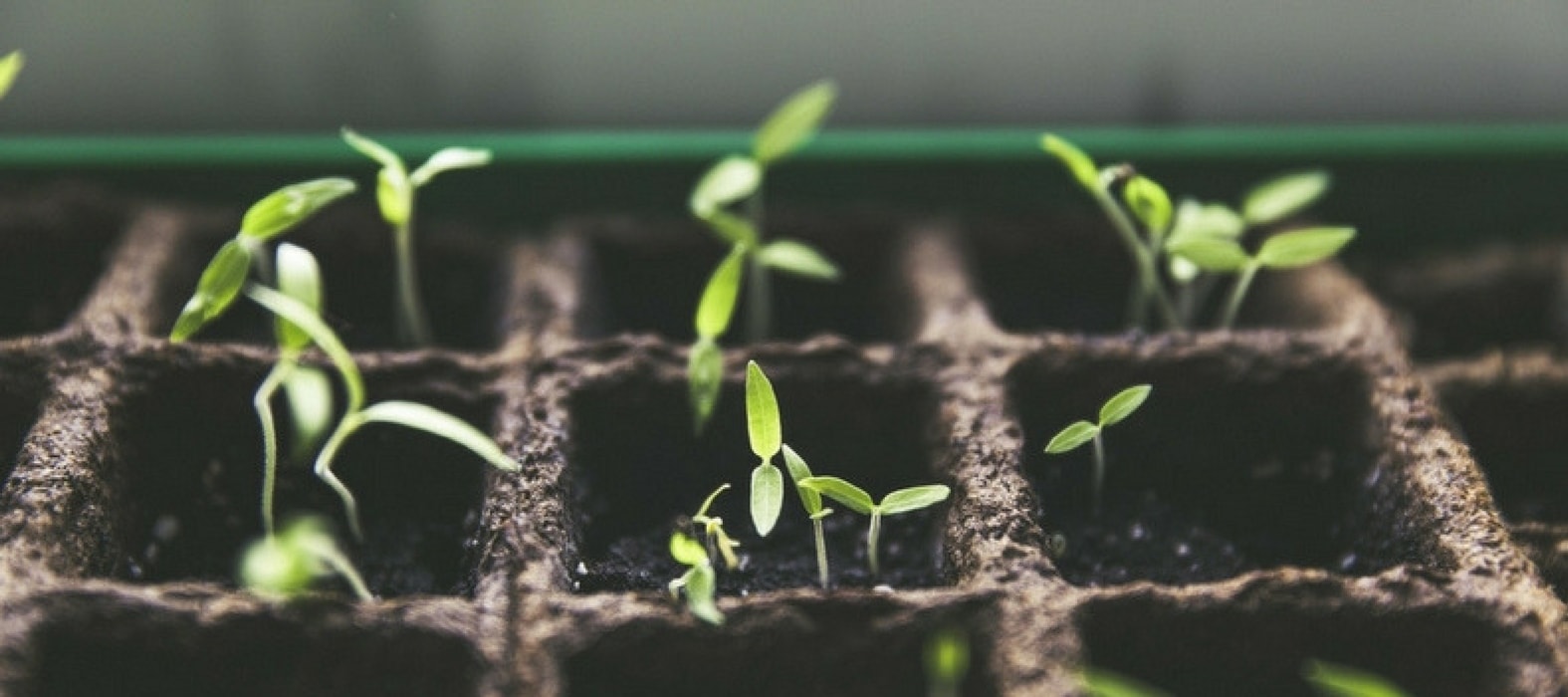 Sowing tomatoes, in warmth
Sowing tomatoes, in warmth
Where, when, and how to plant tomatoes?
Planting in the garden takes place when all risk of frost has passed, usually after mid-May.
About two weeks before planting, remember to harden off your young plants by gradually bringing them outside: start with a few hours in the afternoon and then leave them out all day.
Tomatoes need warmth and plenty of light to bear fruit. Plant them in full sun, preferably in rich, light, and well-draining soil, although they can tolerate fairly ordinary soil. We recommend adding compost or well-rotted manure to enrich the soil.
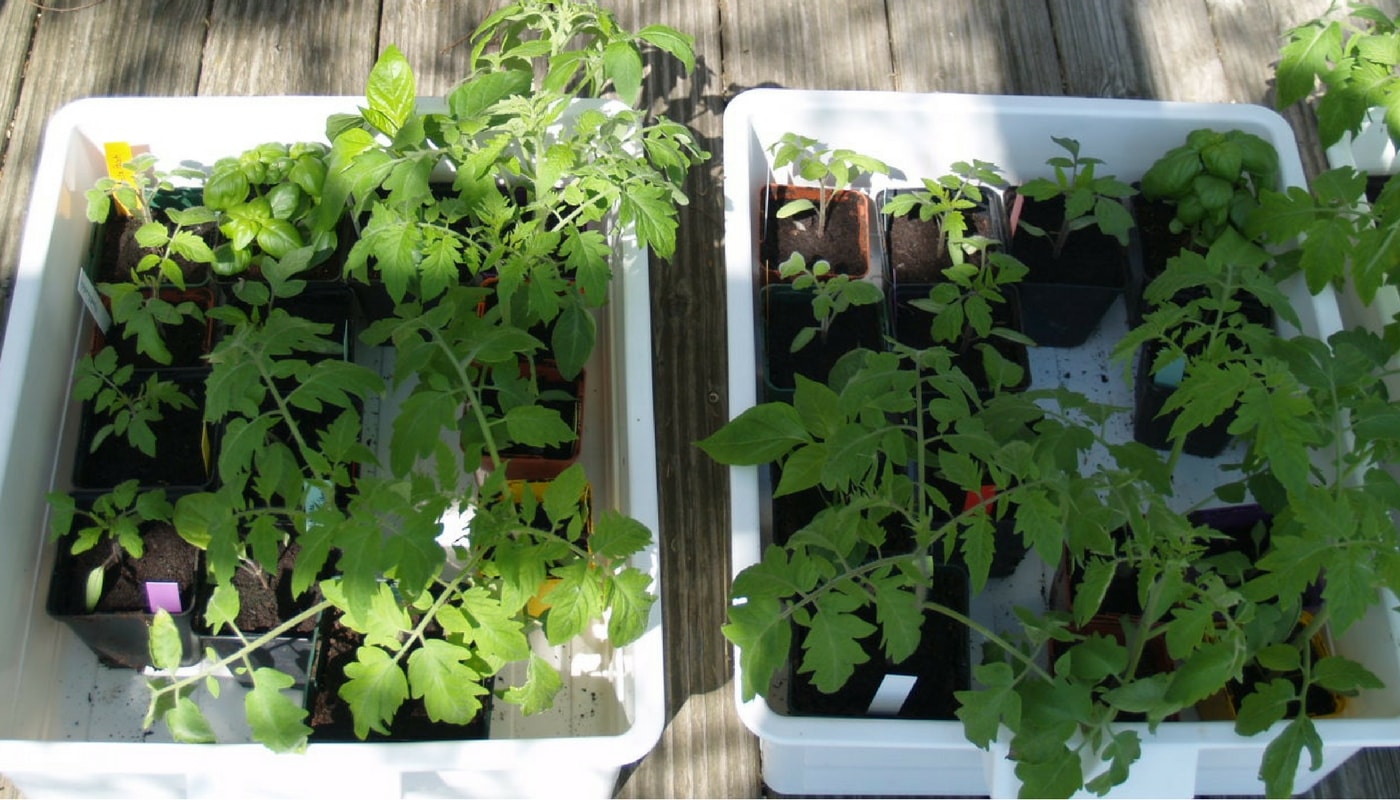
To harden off your young plants: gradually bring them outside
Planting should be done in previously loosened soil (or in large pots on the balcony). The young plants should be spaced about 50 cm apart and are usually staked (see our advice sheet: Staking Tomatoes)
To plant your tomatoes:
- Dig a hole 10 to 15 cm deep using a spade,
- Loosen the soil using a broad fork
- Place the young plant horizontally or, if your soil is deep, bury it up to the first true leaves. The partially buried stem will produce new roots,
- Backfill and firm the soil around the plant to ensure good contact,
- Install a sturdy stake two metres high (except for determinate varieties) and tie it (do not tie too tightly, as the stem will thicken), label the plant with a label if you are growing multiple varieties, and proceed with the first watering.
Some gardeners place a handful of chopped nettles at the bottom of the planting hole to boost the growth of the young plant.
Discover other Tomato seeds
View all →Available in 1 sizes
Available in 1 sizes
Available in 1 sizes
Available in 1 sizes
Available in 1 sizes
Available in 1 sizes
Available in 1 sizes
Available in 1 sizes
Available in 1 sizes
Available in 1 sizes
How to companion plant tomatoes in the vegetable garden?
Traditionally, marigolds or Tagetes are planted at the base of tomatoes to protect them from nematodes. However, it also pairs well with basil, cabbage, and cucumbers.
On the other hand, avoid planting it alongside other solanaceous plants such as peppers, potatoes, or aubergines.
Read also
Building a tomato cage - TutorialWell shelter your tomato feet in certain situations
In regions with cool or rainy summers, growing under cover (greenhouse, tunnel or single transparent shelter protecting from rain) is recommended.
It is worth noting that some varieties adapt well to this type of climate, such as, for example:
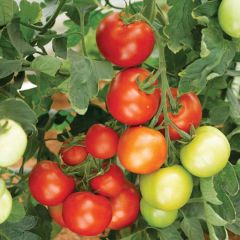
Tomato Moneymaker
- Height at maturity 1,80 m
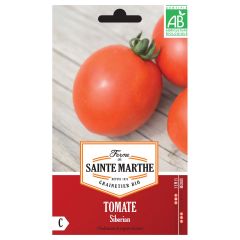
Siberian Organic Tomato - Ferme de Sainte Marthe seeds
- Height at maturity 1,50 m
How to care for tomato plants?
Pruning
Tomato plants are traditionally pruned, except for those with limited so-called “determinate” growth. Pruning is a topic of debate and there are several types: it can be more or less complicated, rather gentle or drastic. Its purpose is to increase the size of the fruits and to aerate the plant so that they receive maximum sunlight.
We advise you, at a minimum, to:
- Remove the “suckers”, that is to say all the new shoots in the axil of the leaves, as they appear, to concentrate the sap on the branches and main fruit clusters;
- Cut the leaves in contact with the soil so that they do not get wet during watering, which limits the risk of Blight.
Find all our tips on pruning tomatoes in our guide: “Pruning tomatoes and their management”
Watering
Tomatoes grown in open ground are relatively tolerant of watering, but do not space them too far apart. Always use water at room temperature and water at the base of the plants, without wetting the foliage.
Potted tomatoes, whose substrate dries out quickly, require very regular watering. A thick mulch will help to space out watering while limiting weeding tasks.
Need additional information on watering tomatoes, follow our tips: “Watering tomatoes, how to do it”
What are the diseases of tomatoes?
Tomatoes grown in gardens generally face one major issue: downy mildew. This is a fungal disease with a well-known symptom: dark spots on the leaves that quickly spread to the stems and then to the fruits. Plants exposed to moisture are very sensitive to it, which is why we recommend growing tomatoes under cover in certain regions or choosing varieties that are not susceptible. They are not many, but ‘Honey Moon F1’ tomato is one of the mildew-resistant tomatoes and its performance is remarkable!
As a preventive and curative measure, spray a solution of Bordeaux mixture (2 grams per litre of water) and repeat the treatment after each rainy episode. In the long term, practice good crop rotation by not planting tomatoes in the same spot for at least 5 years.
Some tomatoes may also exhibit apical necrosis: this is “blossom end rot”. It is not really a disease, but a disorder resulting from a calcium deficiency. To prevent this phenomenon, water moderately but more regularly.
To learn everything about tomato diseases and how to care for them, follow our detailed advice: “Tomato: downy mildew, other diseases and pests – Identify, prevent, treat”
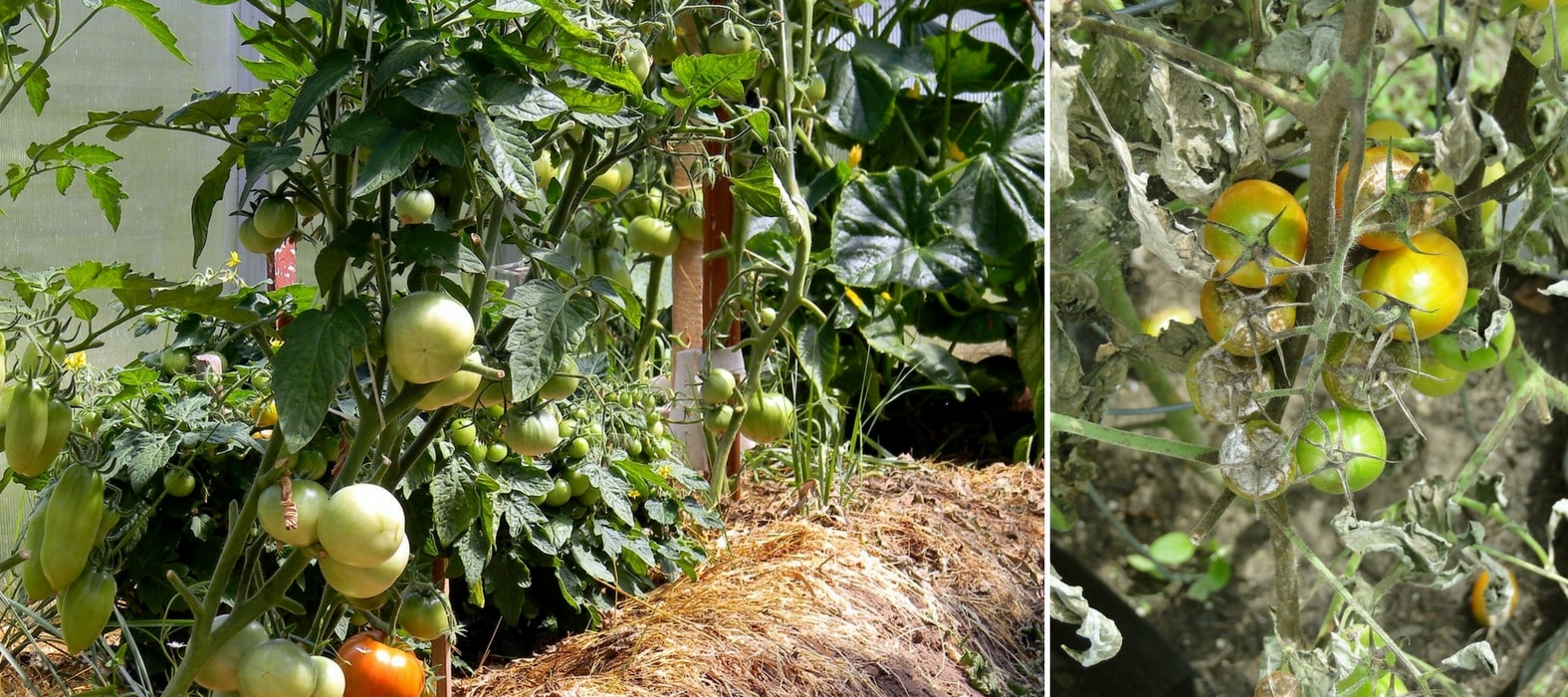
Growing tomatoes under cover, a good way to avoid downy mildew
When to harvest tomatoes?
Depending on the varieties, whether early or late, the harvest takes place 50 to 100 days after planting. A ripe tomato reaches the expected colour and its texture, while remaining firm, shows a slight softening. For better preservation, pick the fruits with their peduncles attached.
Discover our advice sheet on making dried or confit tomatoes with your own tomatoes.
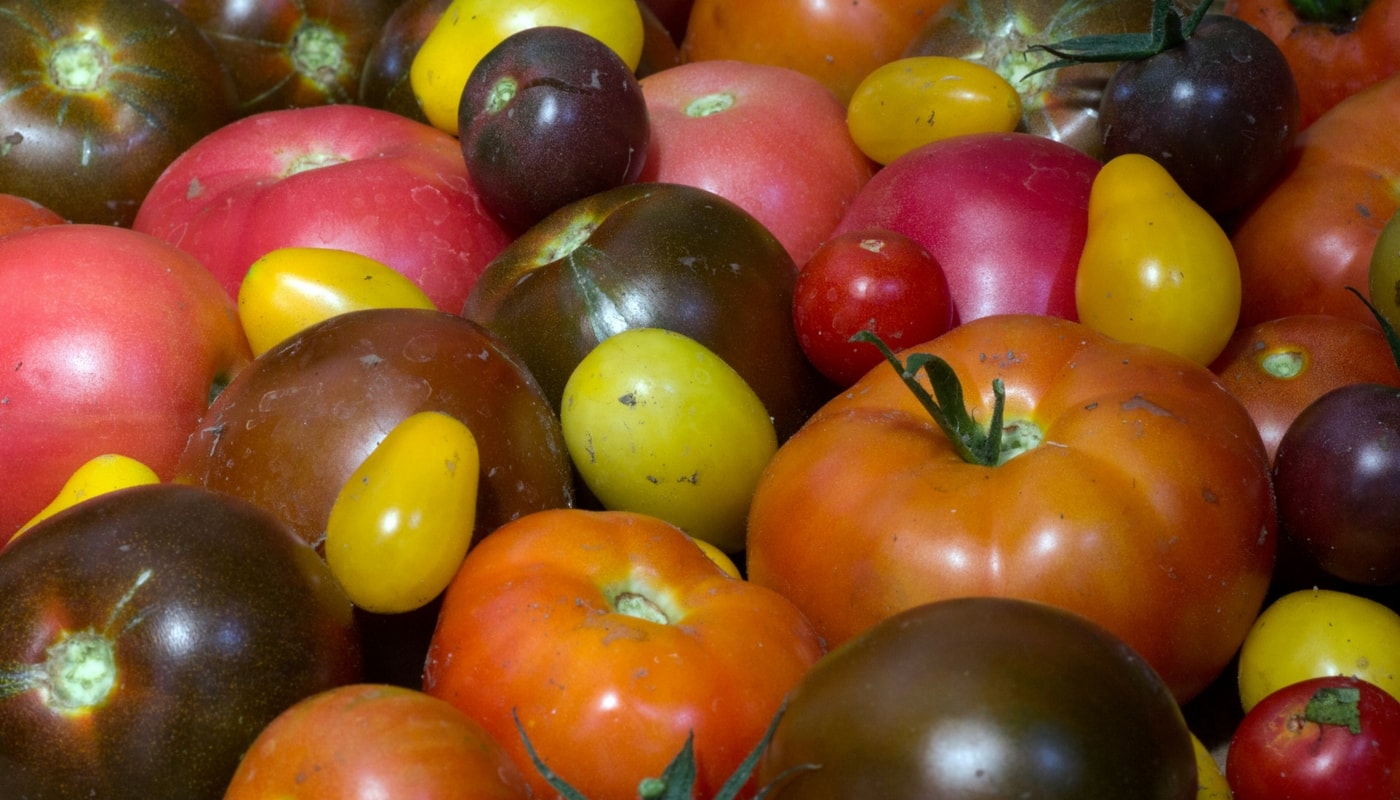
The time for harvest
- Subscribe!
- Contents































